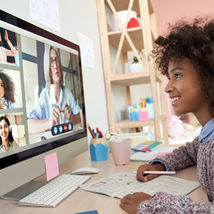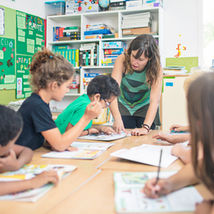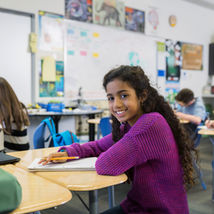Be A Good Digital Citizen: Help Your Kids Understand Copyright, Fair Use, Plagiarism and More.
Updated: May 19

Terms like copyright, fair use, and plagiarism may not be familiar to the masses, but it is more important than ever for all of us to familiarize ourselves with these concepts. They
play an integral part in the world around us, and particularly in the world of the web. The internet is flooded with images and written content, which means much of it can (and does!) run into questions of copyright and plagiarism. There are ways, of course, to help yourself determine the copyright parameters of a piece of media (reverse image search and plagiarism checks can be great ways to do this). Knowing what you’re dealing with will help you take any necessary action required.
Important Terms to Understand
Let’s unpack what, exactly, these terms mean:
Copyright
The unauthorized use of intellectual property is known as copyright infringement. Copyright protects the original work and authorship of a piece of media. The types of works protected vary widely and include anything from paintings, photographs, illustrations, music, sound recordings, computer programs, books, poems, blog posts, movies, architectural works, plays, and so much more.
What kind of acts are considered copyright infringement? A major one is the duplication of a piece of original work. Copying the work of another and claiming it as your own is a big no-no. Thanks to copyright laws, the copyright holder (aka the original author) has the ability to sue the material stealer in order to protect their intellectual property from being incorrectly claimed by another.
However, the first step in this legal process is sending a written notice to the stealer demanding they stop the illegal activity. And because handling a cease and desist letter can be complicated, whether you are the copyright holder or the accused, it is best to involve a lawyer before sending the notice or as soon as you receive one.

Plagiarism
When someone uses a piece of another's work without acknowledging them, it’s known as plagiarism. For example, if you were to represent someone else's intellectual property as your own, you would be considered plagiarizing. An online plagiarism checker is an excellent resource to take advantage of, in order to insure you are not accidentally lifting any original material, and so you can give credit to the original source if someone else's work is alluded to in your own. A similarity checker analyzes the content in-depth to find the original source of the content, and can direct back to sites where the content appears. This resource isn’t confined to written content; you can also use the reverse image search technique to discover any image duplication, as well.
Fair Use
So what happens when you need to use a piece of media that falls under copyright limitations? Fortunately, there are legal parameters that allow for the free and fair use of copyrighted material under certain circumstances. This is known as fair use. Copyright material may be used in specific scenarios, such as criticism, news reporting, teaching, and research. When material that is copyrighted is used in situations like these, the need to acquire permission, or provide payment for the use of the material to the copyright holder, is waived.
Cyberbullying
Cyberbullying occurs when someone is being harassed through electronic means. Also known as online bullying, it perhaps occurs most frequently among teenagers, although adults are more than capable of being guilty of it as well. Cyberbullying can rear its ugly head on any number of platforms, including mobile phones, gaming platforms, messaging forums, and social media.
Cyberbullying may, at first glance, seem discordant with the other concepts on this list, but given the prevalence of the use of altered images to spread lies and misinformation, discovering where a photo came from and if it has been altered can, in this case as well as in the others listed above, be incredibly helpful. A reverse image search can be used to discover how a photo is being used, and what context it is being used in. Harassing someone by spreading altered or embarrassing photos of them falls squarely into the realm of cyberbullying, and for this reason it is helpful to take advantage of tools that can assist you in identifying the potential spreading of these sorts of hurtful images. Reverse image search identifies the primary image source and also reveals the other locations it appears in.
In a Nutshell
In our media-focused world it is more useful than ever to be able to identify where a piece of work originated from, in order to protect the intellectual property and dignity of everyone on or off the web. It’s important to avoid uploading or publishing any content that has been lifted from another until you’re sure you’ve passed the plagiarism check. Relying on a trustworthy plagiarism checker and reverse photo search engine can ensure you are only using approved and ethical content on the web!




















